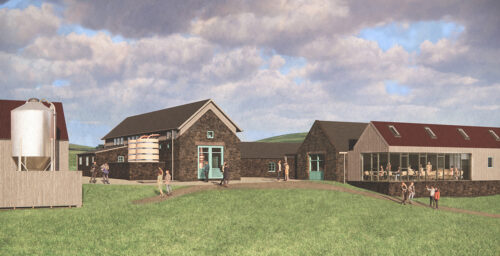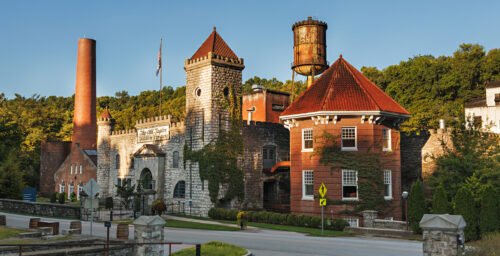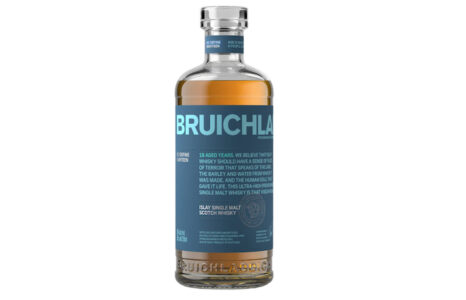What is whisk(e)y, really? While all Scotch is whiskey, not all whiskies are Scotch, or bourbon, for that matter. Whiskey is a broad category that includes Irish, Scotch, bourbon, rye, corn, Canadian and even, more recently, Japanese.
The definition of whiskey, strictly speaking, is this: a spirit obtained from the fermented mash of grain, distilled at less than 190 proof, stored in oak containers and bottled at no less than 80 proof. There are five primary whiskey families. They are: American, Canadian, Irish, Scotch and Japanese. There are two distinct types of whiskey and they are old world (Celtic) and new world. Old world whiskies have a malt centered flavor profile, while new world whiskies showcase the impact of barrel maturation.

There are six Old World classifications for whiskey in addition to the general umbrella term of whiskey. They are:
Single malt-distilled at a single distillery without the addition of any cereal grains other than malted barley and made by batch distillation in pot stills.
Single grain-distilled at a single distillery from malted barley with or without the addition of other malted or unmalted cereals. (This is a little confusing because more than one type of cereal grain can be used. It does not comply with the definition of a single malt.)
Pot Still-distilled from 100% barley, malted and unmalted and distilled in a pot still. (Irish whiskey only.)
Grain-distilled primarily from wheat or corn mash in a continuous still. Distillation is usually done at high proof level with maturation in much used barrels.
Blended-whiskey from different distilleries and of different classifications that are combined.
Vatted-a blend of single malt whiskies which have been distilled at more than one distillery.
There are also six major classifications for new world whiskies. They are:
Canadian-a whiskey made in Canada from a blend of corn, rye, wheat and or barley. The classic way of making Canadian is to blend component whiskies and to add a non-whiskey based blender. (Blenders include sherry, sweetener, caramel coloring and concentrated fruit juice.)
Bourbon-whiskey made in the USA from 51% or more corn and any mixture of other grains. It must be aged in new charred oak barrels. No color or flavoring may be added. Straight bourbon must be aged in new charred oak barrels for a minimum of two years, while bottled in bond bourbon must be produced at one distillery during one distilling season, aged a minimum of four years and bottled at 100 proof.
Rye-whiskey made to the same standards as bourbon using 51% or more rye instead of corn. Rye malt is made from 100% rye and rye mash is rye whiskey aged in used barrels.
Corn-whiskey made from at least 80% corn and any mixture of other grains. If stored in oak it must be uncharred new oak containers.
Wheat-whiskey made using the same standards as bourbon using at least 51% wheat instead of corn.
Blended-a blend of straight whiskies. A blended bourbon, rye or wheat whiskey must contain not less than 51% straight bourbon, rye or wheat whiskies. A blended straight is a blend of 100% straight whiskies.
Also, any straight American whiskey must be aged for a minimum of two years in new charred white oak barrels and no color or flavor added.
But wait, there’s more…! What about Japanese whiskey, you ask? Whiskey from Japan is a relatively new enterprise. Although whiskey has been made in Japan since about 1870, the first commercial Japanese whiskey started production in 1924 with the Yamazaki brand. Whiskey from Japan is considered old world due to the fact that Japanese whiskey is made with Scotch as its model. Japanese whiskey comes in two types, single malt and blended.
What about white whiskey? Well, white whiskey is simply whiskey that is un-aged. Since whiskey has become all the rage and it needs to spend time in barrels to finish a lot of new distillers have started selling white whiskey to make some money while waiting for the barrel aged product to come to fruition. And what’s up with the spelling? Is it whiskey or whisky? Well, that by and large depends on where it is from. The traditional spelling in the new world is whiskey. In Scotland it is generally spelled without the “e”.
Historically distillation came to the west about 1,500 years ago and the Irish Celts are credited with making the first new make whiskey spirit. The word whiskey comes from the Celtic phrase “uisge beatha,” which means water of life. In the 1600s immigrant settlers brought distillation to the new world and the rest, as they say, is history!
Now, with all of this basic knowledge in hand, it is time to figure out which type of whiskey you like. The best way to do this? Start tasting! Irish whiskies run from grassy (Jameson) to nutty in flavor (Bushmills). Scotch whiskys run the gamut from lightly floral and fruity (Oban in the Highlands) to heavily peated or smoky in flavor (Talisker in the Isle of Skye and Lagavulin on the Isle of Islay).
Bourbon tends to be sweeter from the influence of the corn used to make it, and rye tends toward the spicy in its flavors. Then there are hybrids like the Stranahan’s Colorado whiskey, which is made from 100% malted barley like a Scotch but finished in new charred American oak barrels like a Bourbon which appeals to Scotch and Bourbon drinkers alike. (disclaimer: I work at Stranahan’s as a tour guide.)
I hope that you have enjoyed this little whiskey primer. Special thanks to The Society of Wine Educators and the Certified Specialist of Spirits Study Guide for the definitions contained here.









